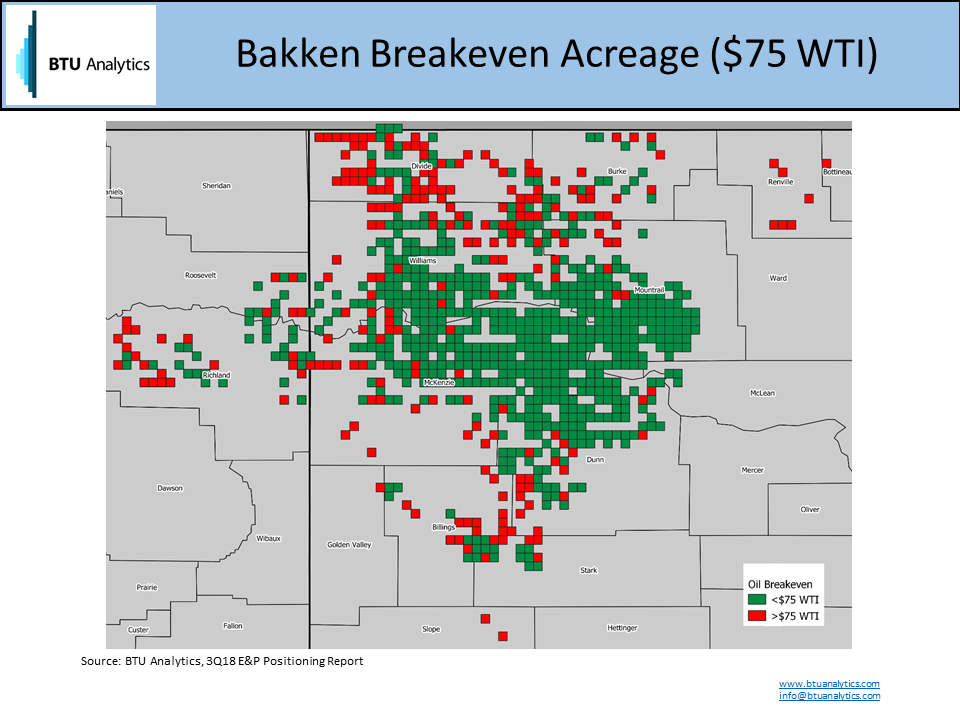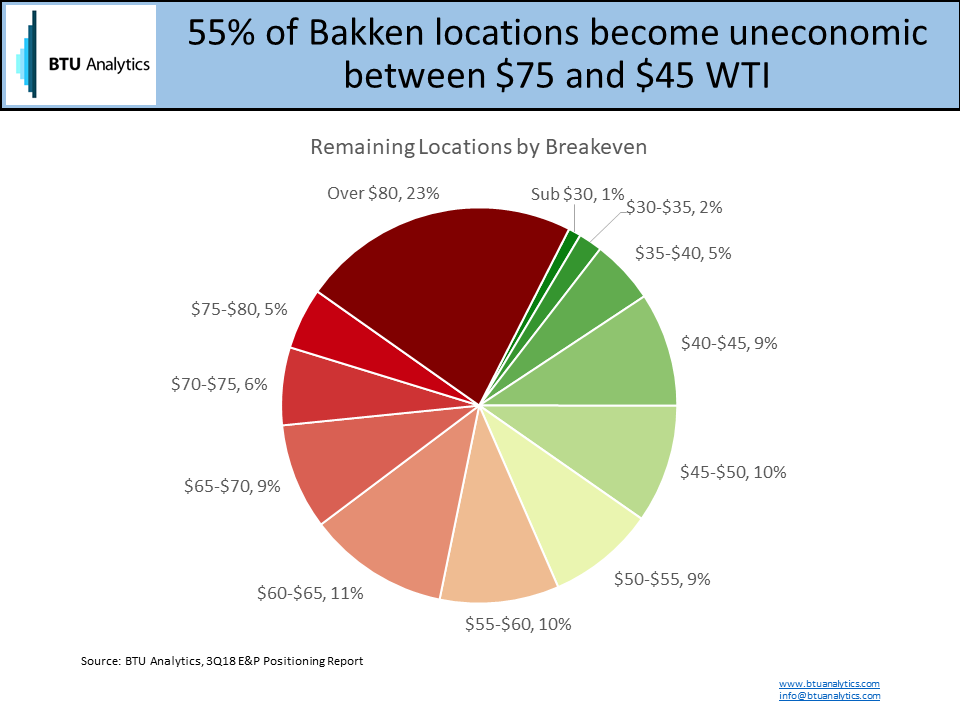It can be hard to believe how quickly the tables turn for the oil market. Just three months ago we saw WTI futures hit $76.90, a milestone untouched since November of 2014. Before there was time to celebrate, volatility pushed WTI below $45/bbl just in time to diminish holiday cheer. With recent volatility, some have begun to wonder what lies ahead for oil basins other than the Permian. Investors have been critical of the long-term prospects of the Williston Basin in recent years, but just how deep does $45 oil cut in the Bakken?
The Williston Basin quickly attained solid economic appeal during the unconventional oil revolution starting in 2010, but the Eagle Ford and Permian didn’t take long to steal the spotlight. The Permian’s proximity to the Gulf Coast and stacked play optionality are certainly crowd-pleasers. Daily WTI differentials for the Bakken were as weak as -$12.50/bbl during the final quarter of 2018, adding pressure to Bakken producers. Does the Bakken still have some fight left in it to usher in 2019? This analysis will consider the runway of remaining opportunities in the Williston based on two recent pricing scenarios: $75 and $45 WTI.

In our E&P Positioning Report, BTU Analytics determines well-level breakeven economics for all horizontal wells turned to sales and aggregates economic data for 3×3 mile aerial sections in most basins across the country as shown above. Using this methodology, the remaining inventory of undeveloped locations can be mapped by viability over the entire Williston Basin. Areas with not enough data to calculate well economics or no drilling activity in the past five years are excluded from the analysis.
Operators focused drilling activity since 2016 in the core sweet spot of the Bakken and Three Forks formations. The core is primarily located in Dunn, McKenzie, Mountrail, and Williams Counties. At first glance, much of the untapped basin should get the green light for development; however, recent pricing challenges contest the optimism $75 WTI might conjure.

The more conservative $45 WTI scenario explains why only the core region persisted in popularity in recent years. Given current completion assumptions, much of the Bakken fails to compare to the core region’s endurance. Plenty of cash cows remain in the pastures of North Dakota, but the herd thins significantly at current oil pricing and differentials.
BTU Analytics’ inventory model utilizes the locations of existing wells and draws on spacing, lateral length, and drainage assumptions to determine how much acreage is still available for development. During 2018’s fourth quarter shift from $75 to $45 WTI, 54.7% of remaining inventory was taken off the table. This left only a small slice of the Bakken pie left for generating new cash flows.

As 2019 capital expenditure budgets begin to surface, the future longevity of many underrated basins lies in the balance. Despite the diminished outlook of $45 oil’s impact on the Williston Basin, we may not have to cope with this negative outlook for long. For more information on BTU’s views on the oil market, request a sample of our Oil Market Outlook. To see more comprehensive economic breakeven analyses, inventory maps, and much more, request more information on our E&P Positioning Report.








